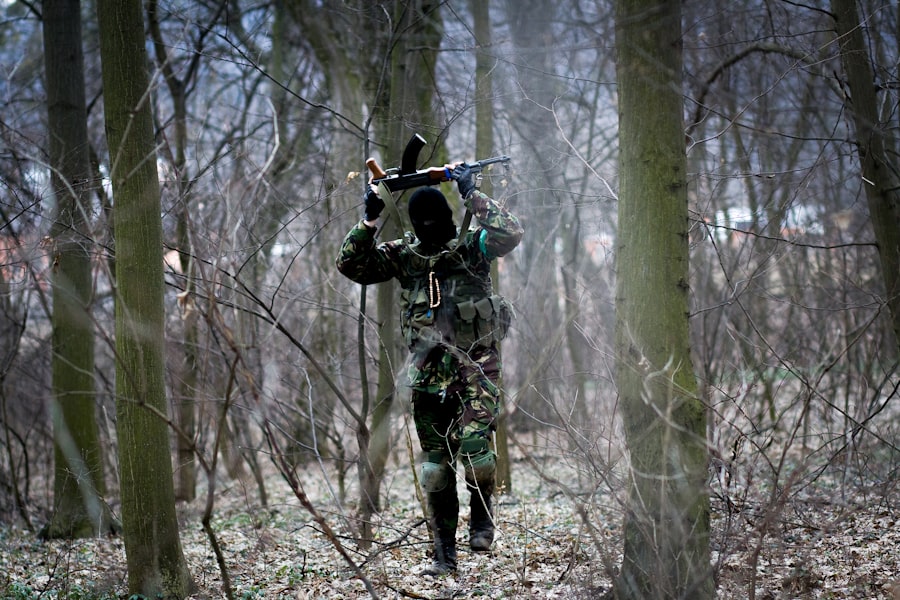The Cold War, a period marked by intense geopolitical tension between the United States and the Soviet Union, was not only a battle of ideologies but also a clandestine war fought in the shadows. Espionage became a critical tool for both superpowers as they sought to gain an upper hand in military, political, and technological advancements. Spies, informants, and intelligence operatives operated in a world where secrecy was paramount, and the stakes were incredibly high.
The intricate web of espionage during this era was characterized by covert operations, double agents, and the constant threat of betrayal from within. As the Cold War unfolded, the intelligence community expanded rapidly, with agencies like the CIA and KGB at the forefront of this shadowy conflict. The need for information about enemy capabilities and intentions drove these organizations to employ various tactics, including surveillance, infiltration, and psychological manipulation.
However, one of the most insidious threats to national security came from within: moles—individuals who infiltrated intelligence agencies and provided sensitive information to adversaries. The presence of moles not only compromised operations but also sowed distrust among colleagues, creating an atmosphere of paranoia that permeated the intelligence community.
Key Takeaways
- Cold War espionage was a critical battleground between the United States and the Soviet Union, with both sides using moles to gain intelligence.
- Moles played a significant role in CIA operations, providing the Soviet Union with valuable information and compromising American intelligence efforts.
- The Cambridge Five, a group of British moles, and other infamous moles had a devastating impact on Cold War intelligence, causing significant damage to Western security.
- Uncovering moles within the CIA required sophisticated methods, including surveillance, polygraph tests, and psychological profiling.
- The hunt for moles took a psychological toll on CIA agents, as they grappled with the betrayal and deception within their own ranks.
The role of moles in CIA operations
Moles played a pivotal role in shaping the landscape of CIA operations during the Cold War. These individuals, often deeply embedded within the agency, had access to classified information that could be exploited by foreign powers. Their motivations varied; some were ideologically driven, believing in the superiority of communism, while others were motivated by personal gain or disillusionment with their own government.
Regardless of their reasons, moles posed a significant threat to national security and the integrity of intelligence operations. The impact of moles on CIA operations was profound. They could provide adversaries with critical insights into American strategies, capabilities, and intentions.
This information could lead to countermeasures that thwarted U.S. efforts abroad or even endangered the lives of operatives in the field. The presence of moles forced the CIA to constantly reevaluate its security protocols and operational methods, leading to a culture of suspicion that affected morale and collaboration among agents.
The hunt for these infiltrators became an obsession for many within the agency, as they sought to identify and neutralize threats that could undermine their mission.
The Cambridge Five and other infamous moles

Among the most notorious moles in Cold War history were the Cambridge Five, a group of British spies who passed sensitive information to the Soviet Union during the late 1930s and into the 1950s. Comprised of Kim Philby, Donald Maclean, Guy Burgess, Anthony Blunt, and John Cairncross, these individuals were products of elite British society and were recruited while studying at Cambridge University. Their betrayal not only compromised British intelligence but also had far-reaching implications for U.
-U.K.
relations during a critical period in history. The Cambridge Five exemplified how deeply embedded moles could operate within intelligence agencies. Their positions allowed them to relay crucial information about Western strategies and operations directly to Soviet handlers.
The revelations surrounding their espionage activities sent shockwaves through the intelligence community and raised questions about loyalty and trust among operatives. While the Cambridge Five are perhaps the most famous examples of moles, they are far from the only ones; numerous other individuals have been identified as spies who infiltrated various intelligence agencies during the Cold War, each contributing to a legacy of betrayal that continues to resonate today.
The impact of moles on Cold War intelligence
| Aspect | Impact |
|---|---|
| Number of moles | Significant number of moles infiltrated intelligence agencies |
| Compromised information | Highly sensitive information leaked to opposing side |
| Damage to operations | Disruption of intelligence operations and missions |
| Loss of trust | Erosion of trust between intelligence agencies and their sources |
| Counterintelligence efforts | Increased focus on counterintelligence measures and security protocols |
The impact of moles on Cold War intelligence was multifaceted and far-reaching. Their actions not only compromised specific operations but also eroded trust within intelligence communities. As moles leaked sensitive information, they forced agencies like the CIA to adopt more stringent security measures, which often hampered operational effectiveness.
The constant fear of betrayal led to an environment where agents were reluctant to share information or collaborate openly with one another, ultimately diminishing the overall efficacy of intelligence-gathering efforts. Moreover, the revelations about moles often had significant political ramifications. When high-profile cases came to light, they sparked public outrage and led to calls for accountability within intelligence agencies.
The exposure of moles like Aldrich Ames and Robert Hanssen in the 1990s reignited debates about oversight and transparency in intelligence operations. These incidents underscored the need for robust counterintelligence measures and highlighted the potential consequences of failing to identify and neutralize internal threats.
Methods used to uncover moles within the CIA
Uncovering moles within the CIA required a combination of investigative techniques and psychological profiling. The agency employed various methods to identify potential infiltrators, including thorough background checks, polygraph examinations, and behavioral analysis. Investigators scrutinized patterns of communication and financial transactions to detect anomalies that might indicate espionage activities.
One of the most effective methods for uncovering moles involved creating a culture of vigilance among employees. The CIA encouraged agents to report any concerns about colleagues’ behavior or activities that seemed out of place.
This approach aimed to foster an environment where agents felt empowered to speak up without fear of retribution. However, this strategy also had its drawbacks; it contributed to an atmosphere of paranoia that could lead to false accusations and further erode trust among colleagues.
The psychological toll of hunting for moles

The relentless pursuit of moles took a significant psychological toll on those involved in counterintelligence efforts within the CIAgents often found themselves grappling with feelings of paranoia and mistrust as they navigated a landscape where anyone could potentially be a traitor. This constant state of vigilance created an environment rife with anxiety, where agents questioned not only their colleagues’ loyalty but also their own judgment. The psychological burden was compounded by the high stakes involved in identifying moles.
The fear of making a wrong accusation or failing to uncover a traitor weighed heavily on agents’ minds. Many experienced stress-related issues, including burnout and anxiety disorders, as they struggled to balance their operational responsibilities with the emotional toll of hunting for internal threats. This psychological strain ultimately affected their performance and decision-making abilities, highlighting the complex interplay between mental health and national security.
The importance of counterintelligence in the Cold War
Counterintelligence emerged as a critical component of national security during the Cold War, particularly in light of the pervasive threat posed by moles within intelligence agencies. The need for effective counterintelligence measures became increasingly apparent as high-profile cases revealed vulnerabilities in existing security protocols. Agencies like the CIA recognized that protecting sensitive information required not only gathering intelligence on adversaries but also safeguarding against internal threats.
The importance of counterintelligence extended beyond merely identifying moles; it encompassed a broader strategy aimed at disrupting enemy operations and preventing espionage activities before they could take root. This proactive approach involved monitoring communications, conducting surveillance on suspected individuals, and employing deception tactics to mislead adversaries about U.S. capabilities and intentions.
By prioritizing counterintelligence efforts, agencies sought to create a more secure environment for their operatives while simultaneously undermining enemy espionage initiatives.
The legacy of CIA moles in modern espionage
The legacy of CIA moles continues to shape modern espionage practices and counterintelligence strategies. The lessons learned from past betrayals have prompted intelligence agencies worldwide to reevaluate their security protocols and adopt more rigorous vetting processes for personnel. Today’s agencies are more aware than ever of the potential for insider threats and have implemented comprehensive training programs aimed at fostering a culture of integrity and vigilance among employees.
Moreover, the stories of infamous moles have become cautionary tales that underscore the importance of loyalty and ethical conduct within intelligence communities. As new technologies emerge and global threats evolve, agencies must remain vigilant against both external adversaries and internal infiltrators. The legacy of past betrayals serves as a reminder that even in an age marked by advanced surveillance capabilities, human factors—such as trust, loyalty, and personal motivations—remain critical elements in safeguarding national security.
The challenges of identifying and neutralizing moles
Identifying and neutralizing moles presents numerous challenges for intelligence agencies. One significant hurdle is that moles often operate under layers of deception, making it difficult to discern their true intentions or affiliations. They may cultivate relationships with colleagues or engage in behaviors designed to deflect suspicion while simultaneously gathering sensitive information for adversaries.
This complexity necessitates sophisticated investigative techniques that can adapt to evolving tactics employed by potential infiltrators. Additionally, agencies must navigate legal and ethical considerations when pursuing suspected moles. Investigations can be intrusive and may infringe upon individuals’ rights if not conducted carefully.
Striking a balance between national security interests and individual privacy rights poses an ongoing challenge for intelligence organizations as they seek to protect sensitive information without compromising ethical standards or public trust.
The impact of moles on Cold War politics and diplomacy
The presence of moles within intelligence agencies had profound implications for Cold War politics and diplomacy. High-profile espionage cases often strained diplomatic relations between nations, leading to increased tensions and mistrust among allies. For instance, revelations about British spies like Kim Philby not only damaged U.K.-U.S.
relations but also fueled suspicions about other Western allies’ loyalty during a time when cooperation was essential for countering Soviet influence. Moreover, the exposure of moles often influenced public perception of government institutions and their ability to safeguard national security. As details emerged about high-profile betrayals, citizens grew increasingly skeptical about their governments’ competence in protecting sensitive information from adversaries.
This erosion of public trust had lasting effects on political discourse surrounding national security policies and shaped debates about transparency and accountability within intelligence agencies.
Lessons learned from the hunt for CIA moles
The hunt for CIA moles has yielded valuable lessons that continue to inform contemporary practices in intelligence gathering and counterintelligence efforts. One key takeaway is the importance of fostering a culture of integrity within intelligence organizations. By prioritizing ethical conduct and loyalty among personnel, agencies can mitigate risks associated with insider threats while promoting collaboration among operatives.
Additionally, investing in robust training programs focused on recognizing signs of potential espionage can enhance an agency’s ability to identify moles before they can inflict significant damage. Emphasizing psychological resilience among agents can also help mitigate the emotional toll associated with hunting for internal threats while fostering an environment where employees feel empowered to report suspicious behavior without fear of retribution. In conclusion, Cold War espionage was marked by complex dynamics involving moles who infiltrated intelligence agencies like the CITheir actions had far-reaching consequences for national security, politics, and public trust in government institutions.
As modern intelligence agencies continue to grapple with insider threats, they must draw upon lessons learned from past betrayals while adapting their strategies to meet evolving challenges in an increasingly interconnected world.
During the Cold War, the CIA was deeply engaged in mole hunts to uncover Soviet spies within its ranks, a tense and often perilous endeavor that shaped the agency’s internal dynamics and operational strategies. A related article that delves into the intricacies of these espionage activities can be found on the website “In The War Room.” This article provides a comprehensive overview of the methods and challenges faced by the CIA during this critical period. For more detailed insights, you can read the full article by visiting In The War Room.
WATCH THIS 🤯How the KGB Stole America’s Future
FAQs
What was the CIA mole hunts during the Cold War?
During the Cold War, the CIA conducted extensive efforts to identify and eliminate moles within its organization who were suspected of spying for the Soviet Union.
Why were the CIA mole hunts significant during the Cold War?
The CIA mole hunts were significant during the Cold War because they aimed to protect sensitive information and prevent espionage activities that could compromise national security.
How did the CIA conduct mole hunts during the Cold War?
The CIA conducted mole hunts by implementing rigorous security measures, conducting internal investigations, and using counterintelligence techniques to identify and apprehend suspected moles within the organization.
What were the consequences of the CIA mole hunts during the Cold War?
The consequences of the CIA mole hunts during the Cold War included the exposure and removal of individuals who were spying for the Soviet Union, as well as the implementation of stricter security protocols within the CIA to prevent future espionage activities.




